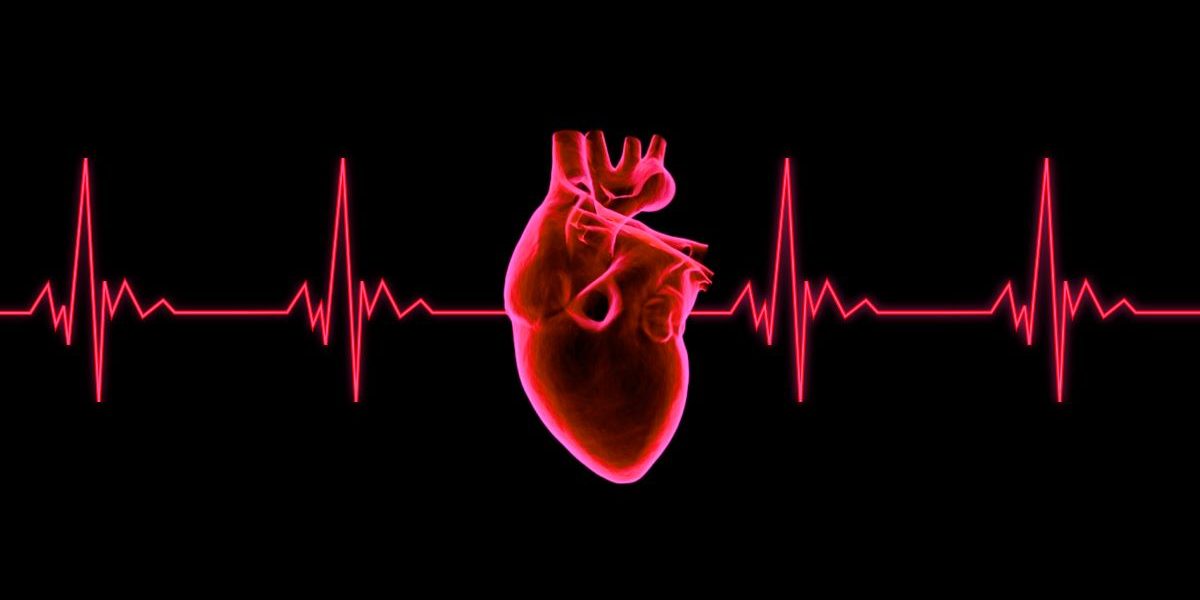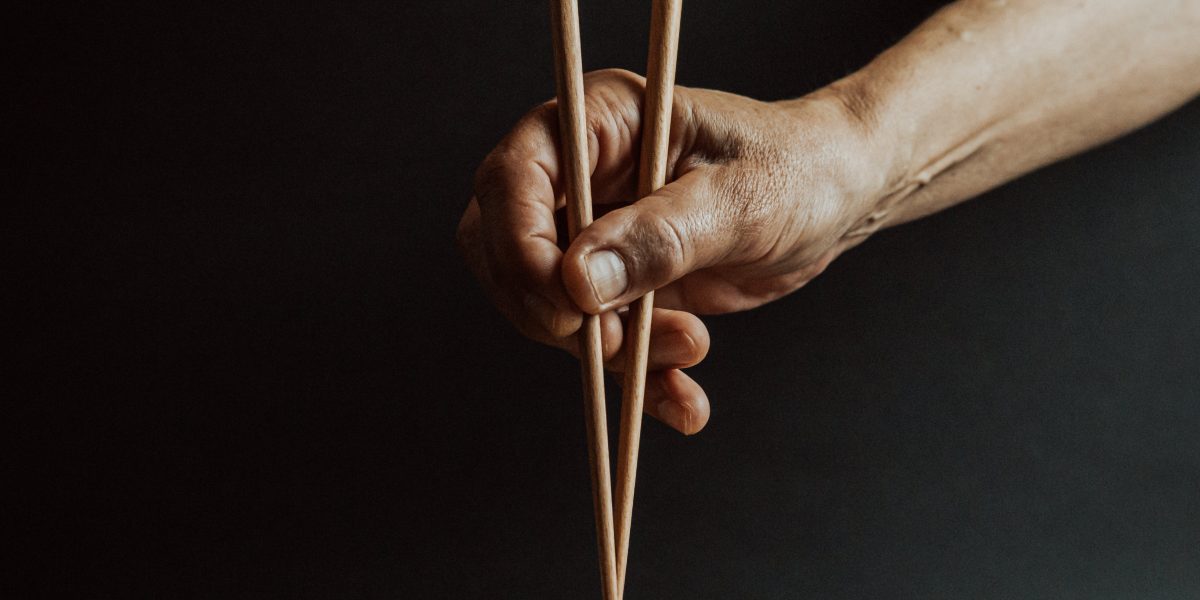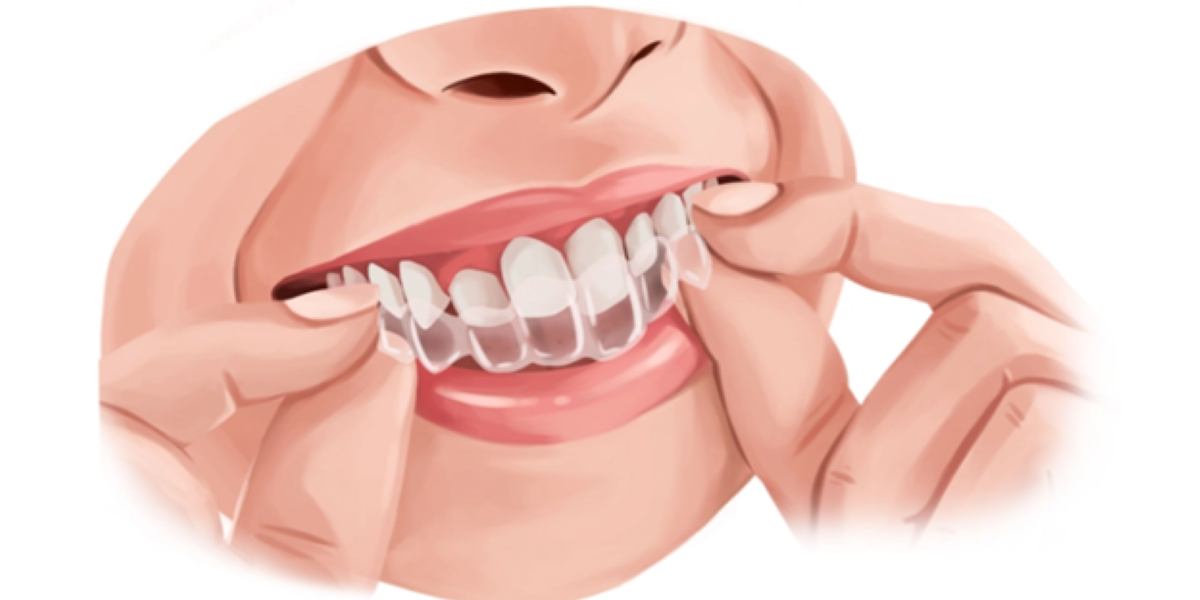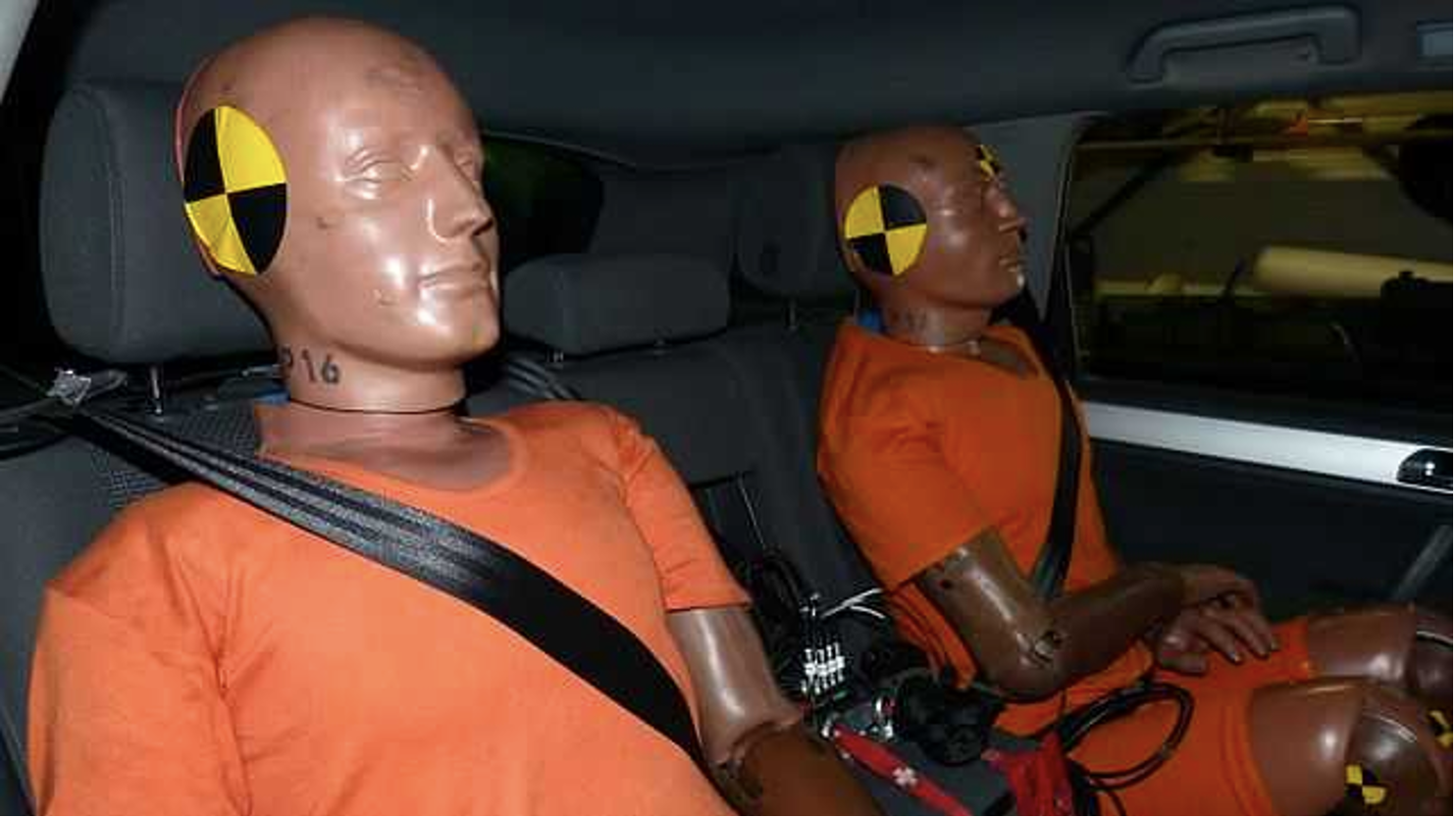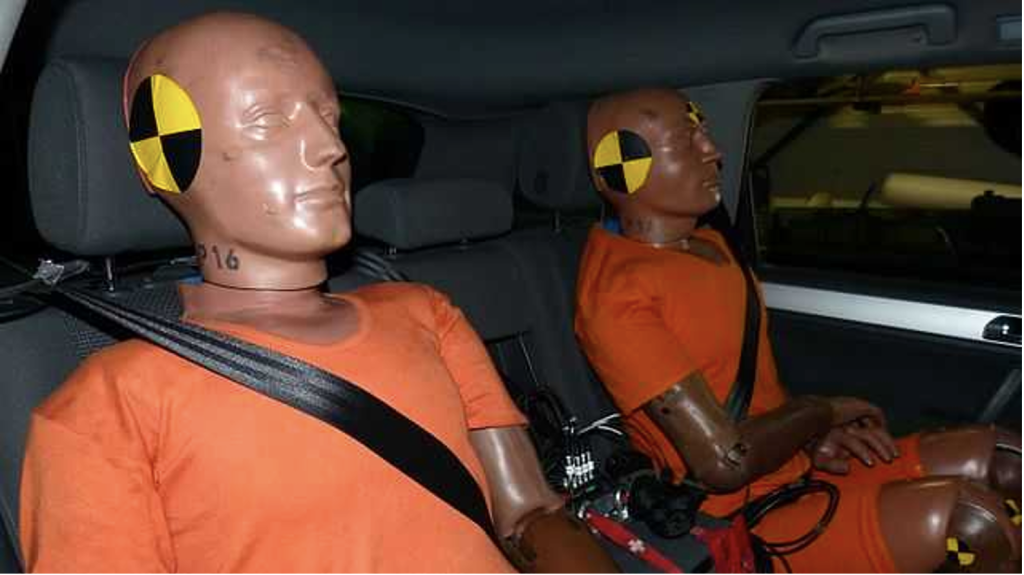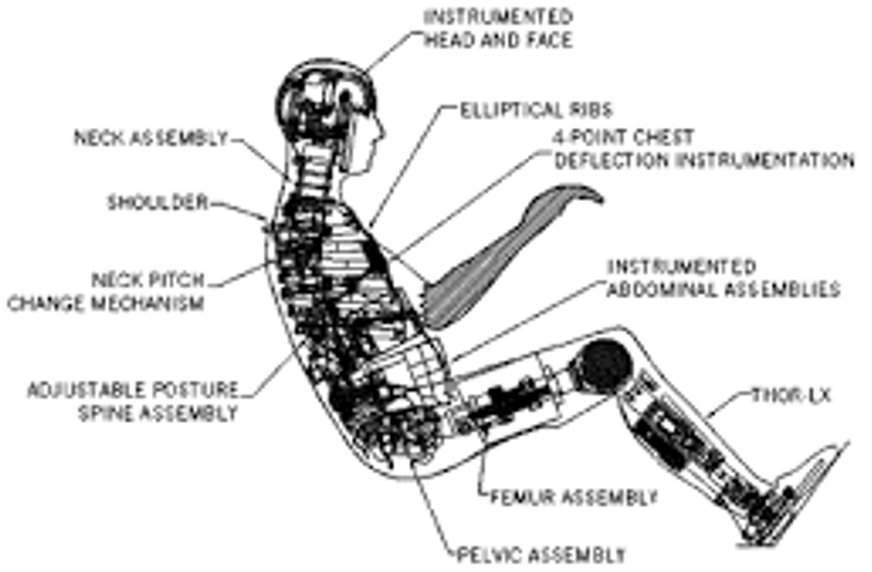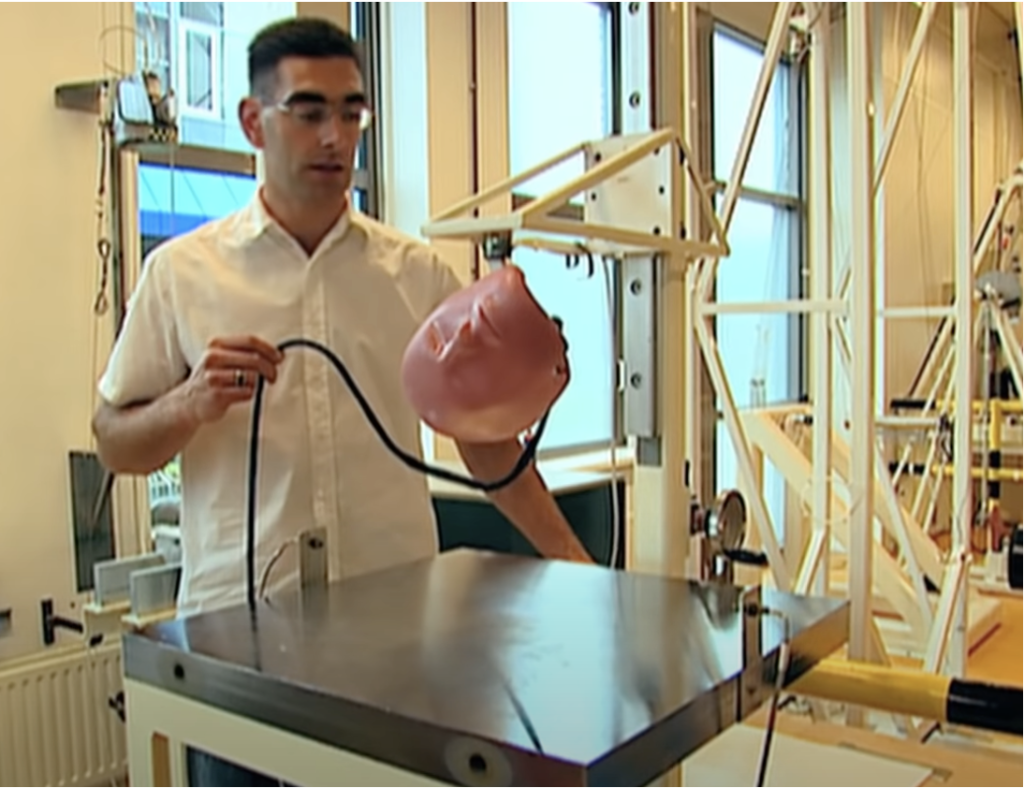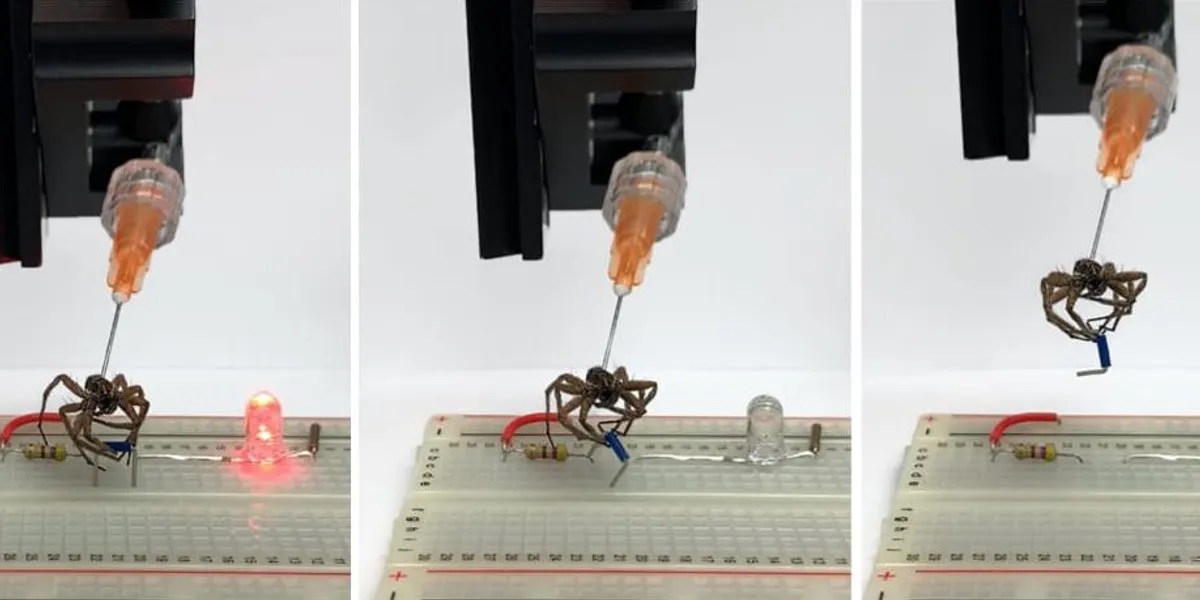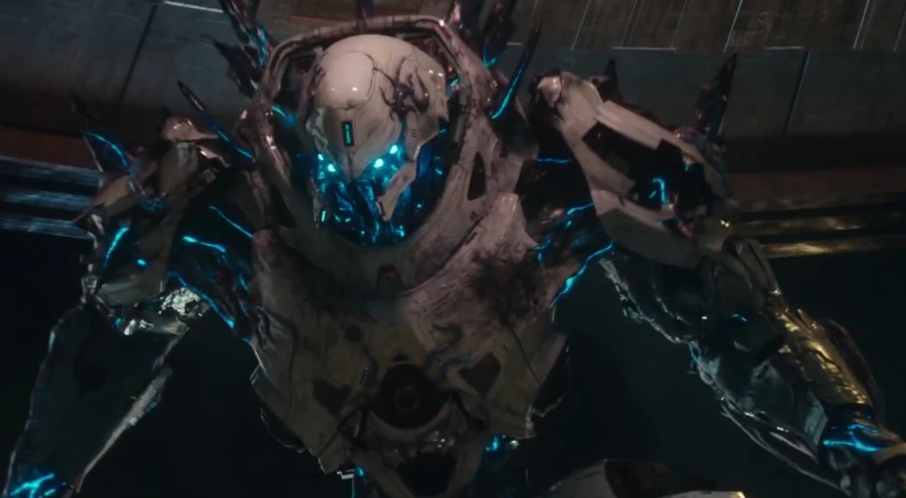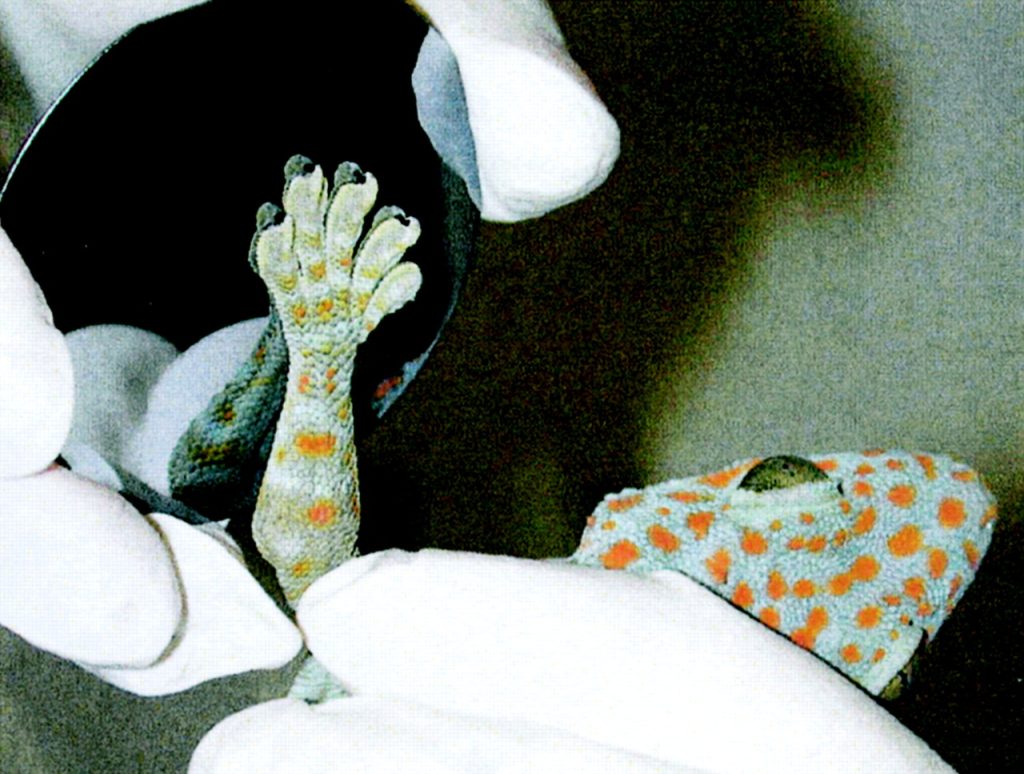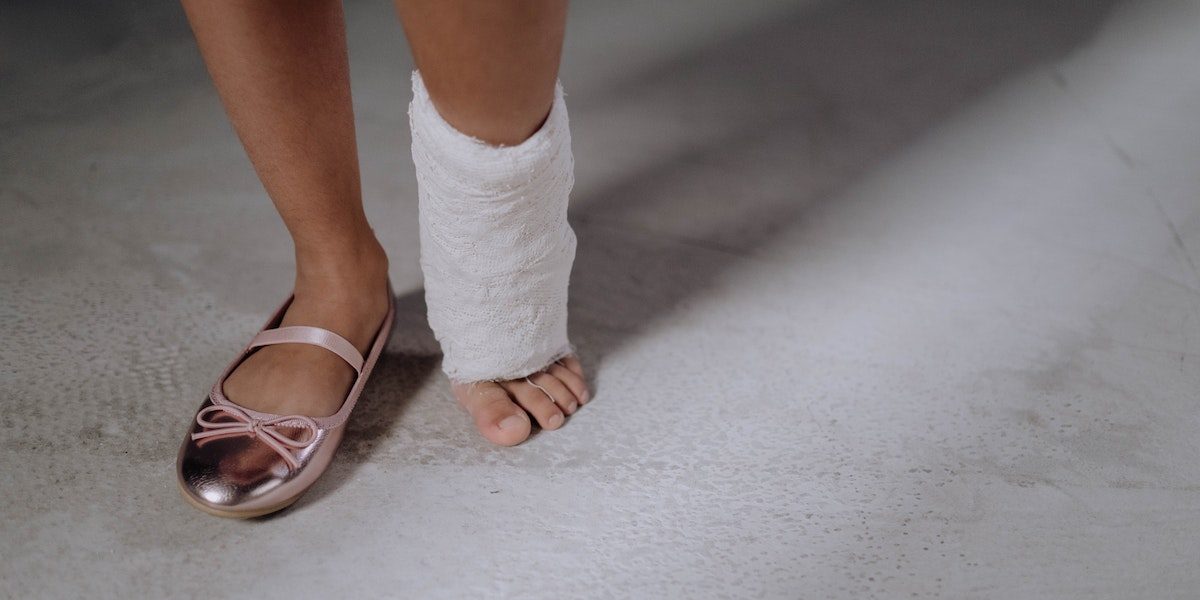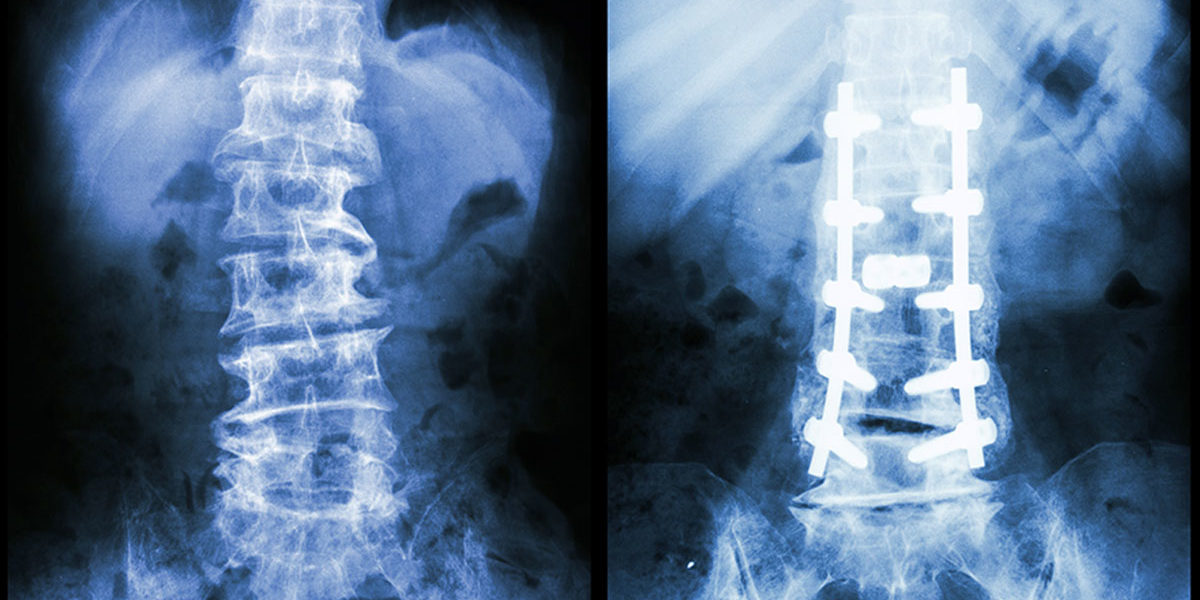How do pressure profiles and shear stresses in prosthetic sockets affect prosthesis user comfort? For prosthesis users, comfort is essential for mobility, quality of life, and long-term health. The fit and alignment of a prosthesis are highly individualized and crucial for instilling confidence in daily activities. However, current prosthesis fittings are largely subjective, depending on the prosthetist’s experience and user feedback. This qualitative method often overlooks the critical factor of pressure distribution within the socket, which can significantly impact pain levels and ease of movement.
Read more: Balancing the Load: Understanding Pressure Distribution in Prosthetic Sockets Continue reading “Balancing the Load: Understanding Pressure Distribution in Prosthetic Sockets”Tag: humans
Can Smartphone Overuse Permanently Damage Thumb Function?
Recently, a few studies(Inal et al. and Osailan) have been conducted on young people and adults regarding their pinch grip and hand grip strength. Shockingly those studies show that people who spend a long time using smartphones show very poor performance in their pinch and hand grip. We know our thumb is the finger used mostly for operating smartphones. It is also the most significant finger for any grip as well. Is it possible that the thumb is damaged permanently by overuse of a smartphone or is it just a correlation, not a causation?
Continue reading “Can Smartphone Overuse Permanently Damage Thumb Function?”Using Vacuum Pressure to Heal Stroke & DVT Patients
Blocked blood vessels
Strokes are the 2nd leading cause of death worldwide. An estimated 795,000 people suffer a stroke every year in the United States. A stroke occurs when a blockage in a blood vessel leads to disruption or blockage of blood flow to the brain. Also, an estimated 350,000 people every year in the US suffer a deep vein thrombosis, which is when a blood clot forms in the deep veins often in the lower extremities. Venous clots can travel up the legs into the lungs or other vital organs, where they can become extremely dangerous or even fatal. When a blood vessel in a vital organ becomes occluded, blood flow must be restored as quickly as possible to return the patient to health.
There are two main procedural methods for removing blood clots from blocked arteries and veins: using tooling to extract the clot mechanically or using pressurized instruments to suck the clot mass out. Suction thrombectomies, also known as aspiration thrombectomies, are becoming more common because they have higher success rates of patient recovery.
READ MOREChopsticks and Simulations: How this combination can save millions and years in cancer research
Did you know that getting a single drug approved can take around 20 years and cost millions of dollars? This lengthy process includes rigorous in vitro (lab-based), in vivo (animal testing), and clinical trials to ensure safety and efficacy.
But what if I told you that scientists are working on advanced 3D in vitro cell culture models that could bridge the gap between traditional 2D cell cultures and animal testing? These innovative models can potentially revolutionize drug development, saving both time and money.
Continue reading “Chopsticks and Simulations: How this combination can save millions and years in cancer research”Invisalign: A Perfect Alternative to Traditional Dental Braces?
Did you ever have dental braces as a child, or perhaps later in life?
If so, then you were experiencing biomechanical forces in motion within the confines of your own mouth! The mechanical basis of dental braces is actually quite simple: brackets and wires apply forces and moments to your teeth in order to push, pull, or rotate them into their proper positions. Since 1998, the “Invisalign” technology has offered the aesthetically pleasing alternative of clear (invisible) retainer trays in order to satisfy a growing societal distaste for the visual appearance of traditional braces. Perhaps those who remember the social anxiety that came with having braces (especially at a younger age) might be jealous of this new alternative! But is this technology just as effective as traditional treatment?
Continue reading “Invisalign: A Perfect Alternative to Traditional Dental Braces?”Wreckage Before the Real Crash: The Biomechanics of Crash Test Dummies
Every 25 seconds, someone is killed in a car accident, resulting in more than 1.25 million deaths worldwide each year.
As a result, dummies are an important tool used in many safety tests for car crashes, and they help to inform many design decisions for automobile manufacturers. Since these dummies are used to assess human behavior in many types of situations involving collisions, swerving, and other performance measures, the primary goal for dummy creators is to imitate human response as closely as possible using artificial means.
Read more: Wreckage Before the Real Crash: The Biomechanics of Crash Test DummiesTherefore, biomechanics plays an integral role in dummy design, from choosing materials that accurately reflect limb stiffness, to assembling ball-and-socket joints that sever when undergoing a certain threshold stress or strain. There are many techniques that researchers use – from computational models to in-field testing – to ensure these dummies reflect the parameters and properly inform the design decisions they are a part of.
Manufacturers routinely spend millions of dollars each year to develop and fine-tune the dummies (or more technically known as anthropomorphic test devices or ATDs) that they implement in their testing procedures. Its history can be traced all the way back to 1949, where the US Air force implemented a dummy for test ejection seats, while they were first implemented commercially by General Motors more than 30 years later. They have undergone many advancements in terms of their accuracy and manufacturing efficiency, arriving at the now ubiquitous Hybrid-III model, which resembles a 50th percentile adult “family man” male that is used in almost all testing simulations. Although many cadever models have been explored, these artificial models offer the most consistent and reliable solution to testing needs, which involves blunt head-on crashes, various types of rollovers, and other rear-based and side-based collisions. By equipping dummies with different kinds of sensors, primarily consisting of MEMs accelerometers and other force transducers, dummies provide predictive power on the impact of different simulation parameters on driver safety and other outcomes.
Dummy performance analysis can be found both in creation of the dummies, ensuring the dummies have the correct human mechanical properties, and in dummy testing, anticipating damages in crashes. Both see a heavy cross-section in biology and mechanics, best illustrated by the head-drop test in the initial development stage. Here, a dummy head undergoes a drop from a predetermined height, and sensing systems ensure the model has optimal weight and damping properties in comparison to in vivo concussion testing. This way, when the commonly used QMA Series 3 DoF Force Transducer later measures neck whiplash force (the most common cause of car crash injury), testing models can be confident such data will reflect real-world collisions. These kinds of before and after tests are used in all parts of the dummy, from parts as large as the lower back, to parts as small as the hinge joint in a finger knuckle. Such precision is needed in all areas to increase the predictive power of dummies, since details like Young’s Modulus (a measure of stiffness) in the chest area affects steering wheel impact displacement, while the coating paint consistency affects the skin abrasions associated with friction and rubbing. Each part of the dummy is crafted meticulously, and as such, the manufacturing and design process of the dummies involves a fast knowledge of physics, biology, and everything in between. Some additional overviews and readings can be found here and here.
How Lower Body Mechanics Unlock Performance in the Pitching Delivery
Why can some pitchers throw 105 mph and some only 85? Baseball players are continuously trying to throw the ball faster and hit the ball further. The lower body muscles, especially the gluteus maximus/medius, adductors and and other pelvic movers, are essentially what power the throw and what can directly increase pitch velocity. Learning how to efficiently use the muscles in the lower body while pitching will allow players to optimize their performance, train correctly off the field, and prevent injuries.
Continue reading “How Lower Body Mechanics Unlock Performance in the Pitching Delivery”Pacific Rim In Real Life?
How Close are we to a Pacific Rim Reality?
Remember those giant hybrid kaiju-fighting robots from Pacific Rim where the brain of a kaiju (strange beast in Japanese) has successfully infected the mechanical brain of the robots and turned human’s greatest defense against them ? Well, it turns out, the boundary between science fiction and reality isn’t as far as we thought. A researched field “Necrobotics” has taken the world by storm and it is so new that Google is still highlighting “Necrobotics” as red. Imagine a world where nature’s most complex design is integrated into human’s innovation, leading to the most incredible biohybrid systems. If you are drawn the future application of this field or the potential harmony between biology and robotics, you’re in for a treat. In this blog post, we’ll be exploring the existing researches within Necrobotics and the future outlook on this unique field.
Necrobotics, a term derived from “Latinized form of Greek nekros” (relating to death ) and “robotics,” may sound a tad bit eerie, but it’s far from sinister. In fact, it’s all about bringing life to machines. The heart of the research is focused on producing biohybrid system that utilizes the intricate abilities of a living organism while combining with the precision and flawless decision making skills of a robot. Similar to our natural world, it draws inspiration from our environment such as the symbiotic relationship of Bees feeding on a flower’s nectar while carrying its pollen from plant to plant.
So, why should you be interested in this intersection of biology and technology? The applications are nothing short of astounding. One day, we will have biohybrid robots aiding in disaster relief events, enhancing our healthcare capabilities and assisting us in answering humankind most complex questions. These robots are able to mimic natural organism abilities, making them more adaptable, versatile, and resilient than conventional robots. From robotic limbs that respond to neural signals in the body to machines that slither like snakes, Necrobotics are in prime position to push humankind to the next level.
Scientists and engineers have developed a variety of technology by studying organisms that have evolved over millennia of evolution. These technology include surface wettability modification based on lotus leaves and Namib beetles, adhesion mechanisms that mimic gecko toes, and even sensing for smart materials by imitating the color-changing chameleon and the humidity-sensitive pine cone. In order to inform the design of robots and actuators, researchers have also taken inspiration from the locomotion of aquatic and terrestrial animals, such as starfish, jellyfish, and cephalopod. Here is a famous example of dead spider corpse used as a mechanical claw.
In conclusion, these scientific topics may have been initially perceived as science fiction but it has quickly garnered attention and are becoming a crucial step for mankind to take. Future discoveries in this field will have the potential to redefine countless industries while acknowledge nature’s design. So if you’ve ever imagined a time where science and nature coexist, now is the perfect time to get excited about necroboticsᅳthe future is here, and it’s amazing.
Read more: Pacific Rim In Real Life?You’re En Pointe! Biomechanics and Ankle Injury Risk in Ballet Dancers
Dancing in pointe shoes raises the risk of injury for female ballerinas. Complex balletic movements require elevated muscular efforts and can put excessive stress loads on the ankle bones. Not many biomechanical studies focus on ballet, even as findings could contribute to decreased injury risk for dancers. A number of factors, such as ground reaction forces, ankle sway, and shoe flexibility can affect a dancer’s injury risk. But which factors contribute most?
Continue reading “You’re En Pointe! Biomechanics and Ankle Injury Risk in Ballet Dancers”Strengthening the Spine with Pedicle Screws
How are pedicle screws being used to strengthen the vertebrae in spinal fusion surgeries?
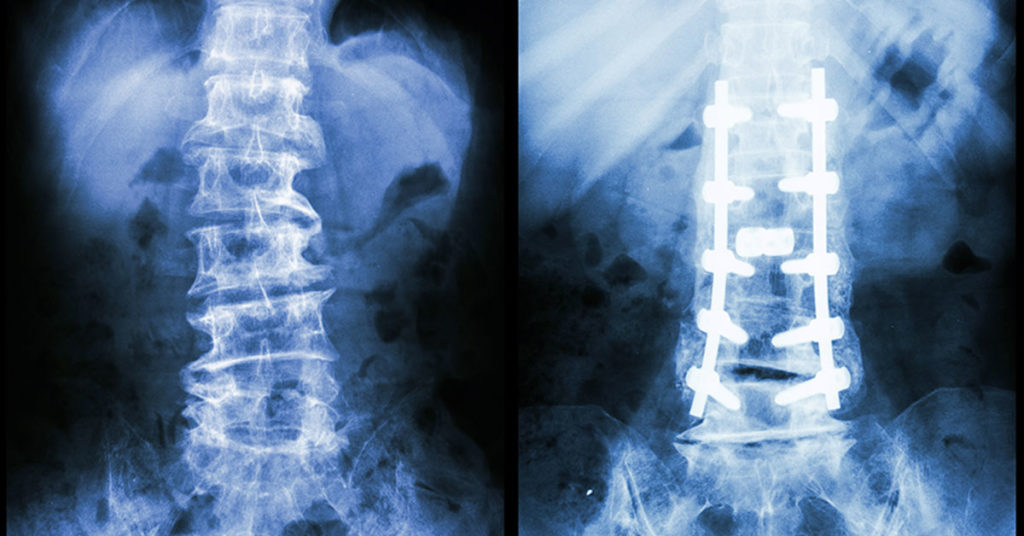
In the US alone, over 300,000 spinal fusion surgeries are performed every year to correct for fractures, deformations, or spinal instabilities. These surgeries are often performed by inserting a pedicle screw into the damaged vertebrae to increase the strength of the fusion. These screws are most often used in cases where the bone in the surrounding area is already weak, which decreases the likelihood of success in the surgery. Essentially, pedicle screws are used in damaged bones to increase their strength, in turn increasing the likelihood of success in a high-risk patient.
Continue reading “Strengthening the Spine with Pedicle Screws”

